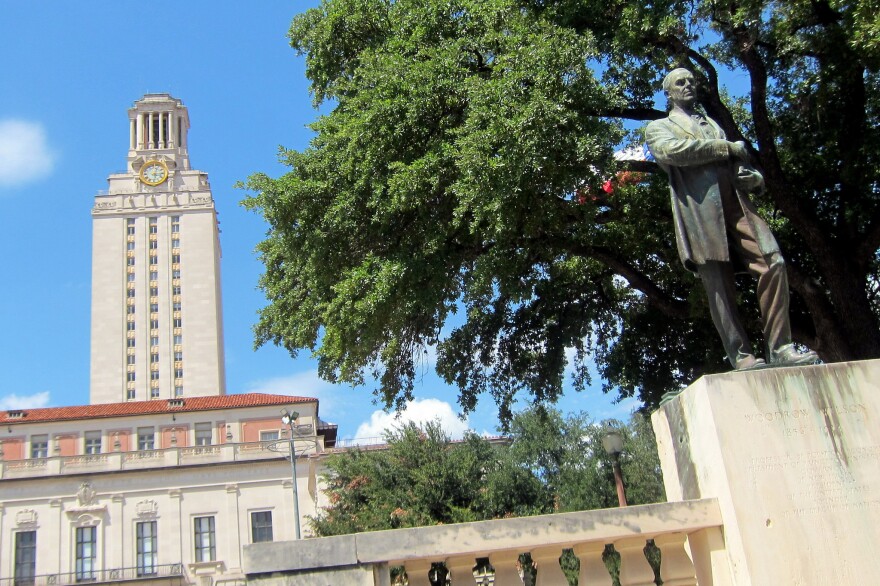After 82 years in the shadow of the school’s iconic tower, the University of Texas removed the controversial Jefferson Davis statue yesterday from its Main Mall.
The university also removed the statue of Woodrow Wilson.
Officially, the university stated the Wilson statue’s removal was for aesthetic reasons, in order to preserve the “symmetry” of the statues that flank George Washington on the mall. While the statue of the 28th President of the United States didn’t attract criticism over the years like the Davis statue, its removal has prompted some to look more closely into Wilson’s history of controversial views on race relations.
For the record, despite the recent flare-up of protests, the entire installation of statues, which was initiated by UT booster George Washington Littlefield, was panned by certain pockets of the campus’ community in the run-up to their construction. Even Wilson didn’t want to be involved in the display – he refused to give a suit to sculptor Pompeo Coppini for reference.
In recent discussions, Wilson wasn’t cast in the same shadow of racism as Davis and fellow Confederates Robert E. Lee, Albert Sidney Johnston and John H. Reagan. Doctor Edmund Gordon, chair of the university’s African-American Diaspora program, argues that Wilson’s time as president was marred with legislation that disenfranchised black Americans. Gordon cites Wilson’s quashing of a bill that would’ve stiffened federal penalties for those convicted of lynching and his re-segregation of both the U.S. Army and the federal government.
Wilson, says Gordon, had attitudes on race relations that were enjoining with that of Littlefield, who initially sought to build a memorial dedicated solely to the Confederacy — and to the ideology espoused in the 1915 film “Birth of a Nation.”
“He fit right into the narrative of Littlefield, who was about making the university a university which reflected the southern view of history and a southern view of race relations in the United States,” Gordon says. “There are ample reasons to remove [Wilson] as well. Part of the narrative of the South Lawn was a reunification of the United States. The narrative is the reunification of the North with the South along the lines of white supremacy.”

Wilson himself was quoted in "Birth of a Nation," the controversial 1915 D.W. Griffith silent film. The then-president even screened the film at the White House that year. It was the first film to be screened at the White House.
Still, Wilson was chosen at the behest of the statues’ sculptor, Coppini, who believed an all-Confederate memorial would be problematic for the university in the future. He chose Wilson because he viewed him as a figure of unity in the country following World War I.
Gordon, who was a member of the university’s working group that made suggestions to Fenves, supported the removal of the Wilson statue, but not for the benefit of the memorial’s symmetry – the reasoning expressed by the university.
“I think the university, or at least the president, was very explicit about his reasons for moving Wilson’s statue,” says Gordon. “I don’t think that the president necessarily thought that these other reasons…were sufficient for removing [the statue.]”





